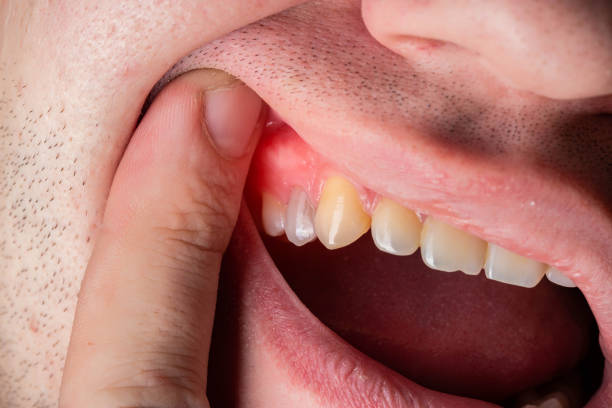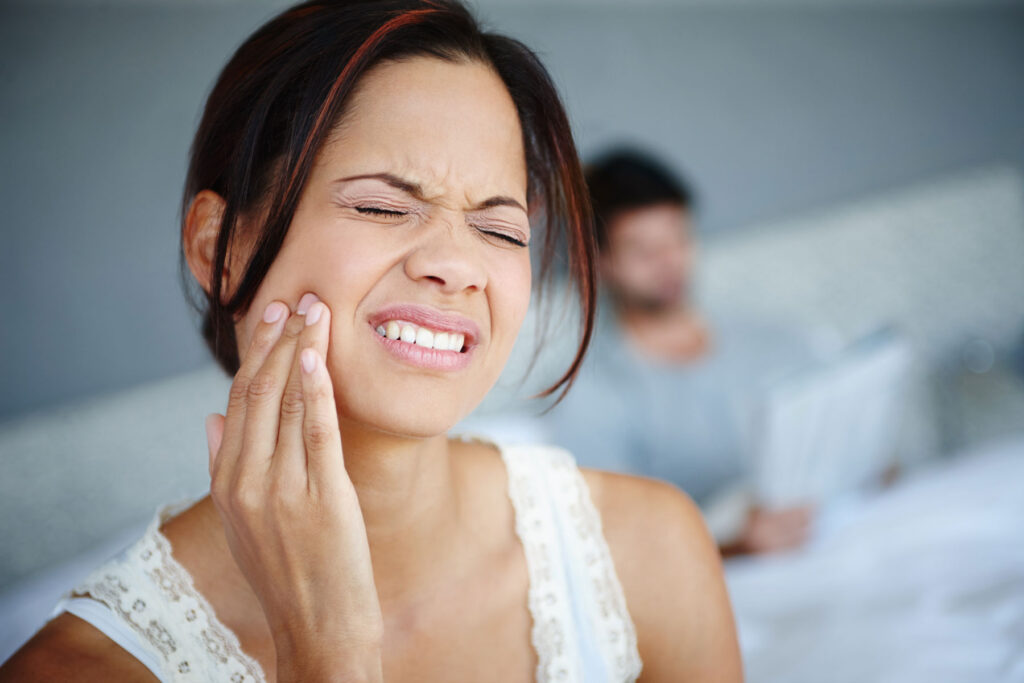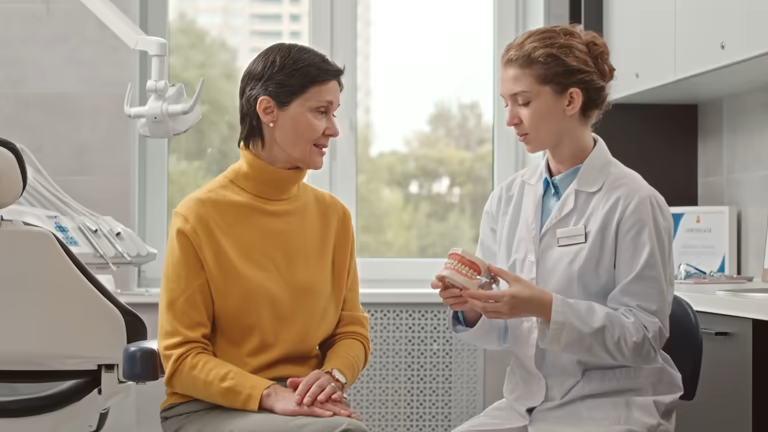The simple answer to the question, “why does my tooth filling hurt after months?” is no, it is not normal. While it is very common to have some mild sensitivity or discomfort in the days and even weeks following a dental filling, this should fade away as the tooth heals and adjusts. If you are experiencing pain, especially sharp pain or throbbing, months after your procedure, it’s a clear signal that something is not quite right. This kind of pain is a sign of an underlying issue that needs professional attention. It can be a little frustrating to feel pain in a tooth you thought was fixed, but it’s important to remember that this problem is very treatable. The first step is to get a proper diagnosis from a dental professional. We at Smiles for Health DDS can help determine the exact tooth filling pain causes and provide the right solution. We can also help with a variety of other dental needs, and you can learn about our options for dental fillings to fix a cavity.
A common misconception is that all post-filling pain is the same, but that’s not the case. The type of pain you feel can be a clue to the underlying problem. For example, sharp pain when you bite down could mean the filling is too high, while a lingering ache might point to a deeper issue like a cracked tooth or nerve irritation. It’s not always easy to figure out why a tooth filling hurts after months, but a dental professional has the tools and expertise to find the cause. We believe that a healthy smile is a happy smile, and we will do everything we can to help you get there. We are committed to your comfort and well-being. We can also help with a variety of other dental needs, and you can learn about our options for onlays and inlays as a less invasive option to fix a damaged tooth.
Why You’re Feeling Pain
- Uneven bite: The filling may be too high, causing an uneven bite and pressure on the tooth.
- New decay: A new cavity may have formed around the filling.
- Cracked tooth: A crack may have formed in the tooth, allowing bacteria to enter.
- Pulpitis: The pulp has become inflamed or infected.
- Allergic reaction: A rare allergic reaction to the filling material may be the cause.
The question of why does my tooth filling hurt after months is a very common one, and the best solution is always to get a proper diagnosis. We can help you with a variety of other dental needs, and you can learn about our options for dental crowns to protect your teeth.
If your tooth filling hurts after months, contact our office to schedule a professional examination and get a clear answer.
What Are the Most Common Causes of Post-Filling Pain?
It’s natural to be concerned when you start to feel pain in a filled tooth, and there are a few common tooth filling pain causes that we see in our practice. One of the most frequent reasons is that the filling is a little too high, which can cause an uneven bite. When you chew, this puts too much pressure on the filled tooth, leading to discomfort or pain. This is a very simple problem to fix with a quick visit to the dentist who can adjust and polish the filling to create a perfect bite. Another common cause is new decay. It is possible for a new cavity to form around the edge of an existing filling. If the seal between the filling and the tooth breaks down, bacteria can get in and cause new decay, leading to pain and sensitivity. We at Smiles for Health DDS are committed to providing you with the best possible care, and we can help you with a variety of solutions, including our options for a root canal to treat a severe toothache.

Another common cause of long-term pain is a cracked tooth. A crack can form in the tooth, allowing bacteria to enter and irritate the pulp. This can lead to a lot of pain and may require a more involved procedure like a root canal. If the pain is constant or throbbing, it may be a sign of pulpitis, which is when the pulp has become inflamed or infected. This is a very serious condition that requires immediate attention from a dental professional. We believe that a healthy smile is a happy smile, and we will do everything we can to help you get there. We are committed to your comfort and well-being. We can also help with a variety of other dental needs, and you can learn about our options for dental bonding to fix a small crack.
Common Reasons for Pain
- Filling is too high: The filling is not shaped correctly, causing an uneven bite and discomfort.
- New decay: A new cavity has formed around the filling.
- Cracked tooth: A crack has formed in the tooth, allowing bacteria to enter and irritate the pulp.
- Pulpitis: The pulp has become inflamed or infected, causing constant throbbing pain.
- Referred pain: Pain from another tooth or area can feel like it is coming from the filled tooth.
The question of why does my tooth filling hurt after months is a very common one, and the best solution is to get a proper diagnosis. We can also help with a variety of other dental needs, and you can learn about our options for veneers to fix a cosmetic issue.
If you’re dealing with post-filling pain, let us find the source of your pain and provide a solution.
Can a Poorly Done Filling Cause Long-Term Sensitivity?
Yes, a poorly done filling can absolutely be a major reason for long-term sensitivity after dental filling. While the procedure is meant to solve a problem, a filling that isn’t placed correctly can create new issues. One of the most common mistakes is not creating a proper seal between the filling and the tooth. If there’s a tiny gap, it can allow bacteria and food particles to leak in, leading to new decay under the filling. This is a very serious problem that can cause a lot of pain and may even require the filling to be replaced. We at Smiles for Health DDS are committed to providing you with the best possible care, and we can help you with a variety of solutions, including our options for dental sealants to protect your teeth from decay.
Another common issue is inadequate insulation. The filling material may not be properly insulating the sensitive inner part of the tooth, which can lead to a lot of sensitivity to hot and cold temperatures. This is a very common type of sensitivity after dental filling, and it’s a clear sign that the filling needs to be redone or replaced. A poorly done filling can also be too high, causing an uneven bite and a lot of pressure on the filled tooth. This kind of pressure can lead to pain and discomfort and may even cause the filling to crack or break. We believe that a healthy smile is a happy smile, and we will do everything we can to help you get there. We are committed to your comfort and well-being. We can also help with a variety of other dental needs, and you can learn about our options for flouride treatment to strengthen your enamel.
How a Poorly Done Filling Causes Sensitivity
- Poor seal: A gap between the filling and the tooth allows bacteria to leak in.
- Inadequate insulation: The filling material is not properly insulating the sensitive inner part of the tooth.
- Overfilling: The filling is too high, causing an uneven bite and pressure on the filled tooth.
- Allergic reaction: A rare allergic reaction to the filling material can cause a rash or itching.
The question of why does my tooth filling hurt after months is a very common one, and a poorly done filling is one of the most frequent causes. The best repair options for cracked teeth are those that are effective and affordable. We can also help with a variety of other dental needs, and you can learn about our options for preventive dentistry to keep your smile healthy and beautiful.
If you are concerned about a previous filling, call us today for a professional evaluation and a path to a pain-free smile.
When Is a Root Canal Needed After a Filling?
It is a common question, why does my tooth filling hurt after months, and sometimes the answer is that the tooth needs more than just a filling. A root canal is needed when the pulp, which is the soft tissue inside the tooth that contains the nerves and blood vessels, becomes infected or inflamed. This can happen for a few reasons. The most common is that the decay was so deep that it reached the pulp before the filling was placed. Even though the filling removed the decay, the pulp may have been too damaged to heal on its own. Another reason is that a new crack has formed in the tooth, allowing bacteria to enter and infect the pulp. The symptoms that indicate a root canal is needed include constant, throbbing pain, extreme sensitivity to hot and cold, and swelling around the tooth. This kind of pain is not normal and is one of the most serious tooth filling pain causes. We at Smiles for Health DDS are experts in diagnosing and treating all types of dental pain, and we can help you with a solution that will not only relieve your pain but also help you feel your best. We can also help with a variety of other dental needs, and you can learn about our options for a root canal to treat a severe toothache.

A root canal is a very common and effective procedure that can save a tooth that would otherwise need to be extracted. The procedure involves removing the infected pulp, cleaning the inside of the tooth, and then filling and sealing it. After the root canal, a dental crown is usually placed over the tooth to protect it from future damage. This is a very important step, as a tooth that has had a root canal is more brittle and can be more susceptible to cracking. We believe that a healthy smile is a happy smile, and we will do everything we can to help you get there. We are committed to your comfort and well-being. We can also help with a variety of other dental needs, and you can learn about our options for dental crowns to protect your teeth.
When a Root Canal Is Necessary
- Deep decay: The decay was so deep that it reached the pulp before the filling was placed.
- Infected pulp: The pulp has become infected, causing constant, throbbing pain.
- Cracked tooth: A crack has formed in the tooth, allowing bacteria to enter and infect the pulp.
- Trauma: The tooth was traumatized during the filling procedure.
The question of why does my tooth filling hurt after months is a very common one, and the best solution is to get a proper diagnosis. We can also help with a variety of other dental needs, and you can learn about our options for dental bridges to replace a missing tooth.
If you are experiencing persistent pain from a filled tooth, call us today for a professional evaluation and a path to a pain-free smile.
What Home Remedies Help with Filling Pain?
It’s natural to want to find a quick fix for a painful tooth filling, and there are a few home remedies that can provide temporary relief. However, it’s important to remember that these are only for temporary relief and are not a substitute for professional dental care. If you are asking, why does my tooth filling hurt after months, it’s a sign of a serious problem that needs to be addressed by a dentist. One of the most effective home remedies is to take an over-the-counter pain reliever like ibuprofen or acetaminophen. These can help to reduce pain and inflammation and can provide some temporary relief. Another simple but effective remedy is to use a cold compress. A cold compress on the outside of your cheek can help to reduce swelling and numb the area, which can help with pain. We at Smiles for Health DDS are committed to providing you with the best possible care, and we can help you with a variety of solutions, including our options for cosmetic dentistry offers to help you get the smile you’ve always wanted.
Another home remedy that can help with sensitivity after dental filling is a saltwater rinse. A warm saltwater rinse can help to reduce inflammation and kill surface bacteria, which can provide some temporary relief. It’s also important to avoid any triggers that can cause pain. Avoid hot, cold, sugary, and acidic foods and drinks, as they can all cause a lot of pain and sensitivity. It is important to remember that these are only temporary solutions and do not address the underlying tooth filling pain causes. We believe that a healthy smile is a happy smile, and we will do everything we can to help you get there. We can also help with a variety of other dental needs, and you can learn about our options for smile makeovers to help you get the smile you’ve always wanted.
Home Remedies for Temporary Relief
- Over-the-counter pain relievers: Ibuprofen or acetaminophen can help to reduce pain and inflammation.
- Cold compress: A cold compress on the outside of the cheek can help with swelling and pain.
- Saltwater rinse: A warm saltwater rinse can help to reduce inflammation and kill surface bacteria.
- Avoid triggers: Avoid hot, cold, sugary, and acidic foods and drinks.
The question of why does my tooth filling hurt after months is a very common one, and the best solution is always to get a proper diagnosis. We can also help with a variety of other dental needs, and you can learn about our options for teeth whitening to help you get a brighter smile.
To get to the bottom of your tooth filling pain, schedule an appointment with our compassionate team for professional care.
When Should You Go Back to the Dentist for a Painful Filling?
It is important to know when to stop relying on home remedies and go back to the dentist for a painful filling. While some mild sensitivity is normal, persistent pain is a clear sign that something is wrong. You should go back to the dentist if the pain lasts for more than a few days after the filling. Another sign that you need to go back to the dentist is if you feel a sharp pain when you bite down. This can be a sign that the filling is too high and needs to be adjusted. If you are experiencing constant, throbbing pain, you should go back to the dentist immediately. This is a sign of an infected pulp and requires immediate attention. Swelling or a fever are also signs of a spreading infection and require immediate attention. The question of why does my tooth filling hurt after months is a serious one that needs professional care. We at Smiles for Health DDS are committed to providing you with the best possible care, and we can help you with a variety of solutions, including our options for an emergency dentist appointment to get you the immediate care you need.

It is important to remember that a painful filling is not a problem that will go away on its own. The longer you wait, the more serious the problem can become. A simple adjustment can save a tooth from a root canal, and a root canal can save a tooth from an extraction. The best way to prevent a more serious problem is to go back to the dentist as soon as you notice any persistent pain or discomfort. We believe that a healthy smile is a happy smile, and we will do everything we can to help you get there. We can also help with a variety of other dental needs, and you can learn about our options for dental extractions if your tooth is too damaged to be saved.
When to Seek Professional Help
- Persistent pain: If the pain lasts for more than a few days after the filling.
- Sharp pain when biting: This can be a sign that the filling is too high.
- Constant, throbbing pain: This is a sign of an infected pulp and requires immediate attention.
- Swelling or fever: These are signs of a spreading infection and require immediate attention.
- Sensitivity to temperature: If you are experiencing a lot of sensitivity to hot and cold temperatures, it can be a sign of a deeper problem.
The question of why does my tooth filling hurt after months is a very common one, and the best solution is always to get a proper diagnosis. We can also help with a variety of other dental needs, and you can learn about our options for dental implants to replace a missing tooth.
If you are experiencing a painful filling, contact our office to arrange a consultation for proper diagnosis and treatment.
Frequently Asked Questions
Why does my tooth filling hurt after months when it felt fine at first?
Delayed discomfort can happen if the bite is slightly uneven or if decay spreads underneath. Smiles for Health DDS explains that why does my tooth filling hurt after months is often linked to overlooked issues. Tooth filling pain causes vary, and sensitivity after dental filling may develop later.
Can nerve irritation explain why does my tooth filling hurt after months?
Yes, nerve irritation is one of the most common tooth filling pain causes. Smiles for Health DDS notes that why does my tooth filling hurt after months often relates to pulp sensitivity. Sensitivity after dental filling usually improves, but sometimes needs retreatment.
Why does my tooth filling hurt after months when chewing?
Pain during chewing may mean the filling is too high or the tooth is cracked. Smiles for Health DDS explains that tooth filling pain causes chewing discomfort when pressure irritates nerves. Sensitivity after dental filling often shows up this way.
Can replacing an old filling stop why does my tooth filling hurt after months?
Yes, replacing a loose or worn filling can solve discomfort. Smiles for Health DDS confirms that why does my tooth filling hurt after months may mean leakage. Tooth filling pain causes include breakdown over time, leading to sensitivity after dental filling.
Why does my tooth filling hurt after months if it was a deep cavity?
Deep cavities bring fillings close to nerves, which can explain ongoing pain. Smiles for Health DDS shares that tooth filling pain causes often include nerve exposure. Sensitivity after dental filling in deep cavities may require further treatment.
Could clenching teeth cause why does my tooth filling hurt after months?
Yes, clenching can stress the filling, leading to pain. Smiles for Health DDS highlights that tooth filling pain causes from grinding are common. Sensitivity after dental filling can be worsened by bite pressure
Why does my tooth filling hurt after months when eating hot or cold foods?
Sensitivity to temperature often means the nerve is irritated. Smiles for Health DDS explains that tooth filling pain causes thermal discomfort when enamel is thinner. Sensitivity after dental filling may last but should be monitored.
Can infection explain why does my tooth filling hurt after months?
Yes, untreated decay beneath a filling can cause infection. Smiles for Health DDS warns that tooth filling pain causes from infection may require a root canal. Sensitivity after dental filling can sometimes indicate deeper problems.
Why does my tooth filling hurt after months if it’s a composite filling?
Composite fillings can shrink slightly, creating gaps. Smiles for Health DDS explains that why does my tooth filling hurt after months may be due to leakage. Tooth filling pain causes like this trigger sensitivity after dental filling.
What can Smiles for Health DDS do if sensitivity after dental filling won’t go away?
Smiles for Health DDS can adjust, replace, or recommend root canal therapy if needed. Why does my tooth filling hurt after months is a common concern, but tooth filling pain causes can be resolved. Sensitivity after dental filling should not be ignored.
How long should mild discomfort after a new filling last?
Mild discomfort usually lasts a few days to two weeks, depending on the depth of the filling.
Can fillings crack over time and cause delayed pain?
Yes, fillings can crack under pressure, allowing bacteria in and causing discomfort.
Do larger fillings have a higher risk of pain later on?
Yes, bigger fillings are closer to the nerve, increasing the chance of long-term sensitivity
Can allergies to filling materials cause delayed pain?
Rarely, but some patients react to metals or resins, which can cause chronic irritation.
When should I seek urgent care for pain after a filling?
If pain is severe, swelling occurs, or fever develops, seek urgent dental attention immediately







